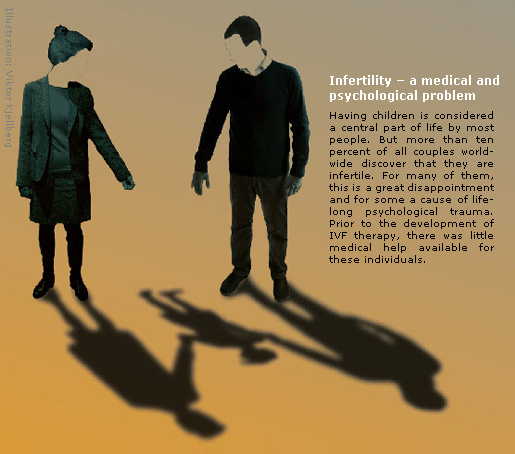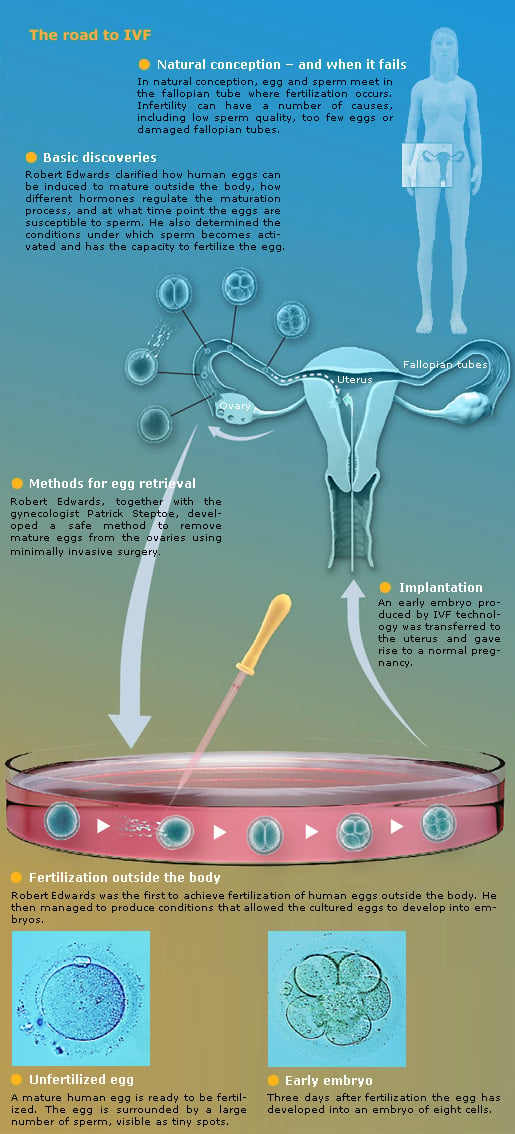Illustrated information
Nobel Poster from the Nobel Committee for Physiology or Medicine, web adapted by
Nobelprize.org
Contents
The road to IVF
A historic delivery
Credits and references
The Nobel Assembly at Karolinska Institutet has awarded the Nobel Prize in Physiology or Medicine 2010 to Robert G. Edwards for the development of human in vitro fertilization (IVF). His achievements have made it possible to treat infertility, a medical condition afflicting a large proportion of humanity including more than ten percent of all couples worldwide.
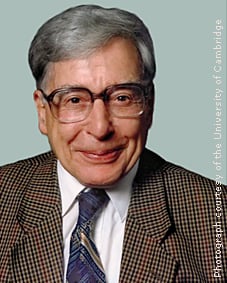
Robert G. Edwards
Robert Edwards was born in 1925 in Batley, Yorkshire, UK. During most of his academic career in reproductive physiology, he worked in Cambridge, UK, where he and his coworkers also started the world’s first IVF centre, Bourn Hall Clinic. Robert Edwards is currently professor emeritus at the University of Cambridge.
A historic delivery
On July 25th 1978 the world’s first IVF baby, Louise Brown, was born as a result of Robert Edwards’ new treatment. The event attracted worldwide attention and marked the beginning of a new era in medicine.
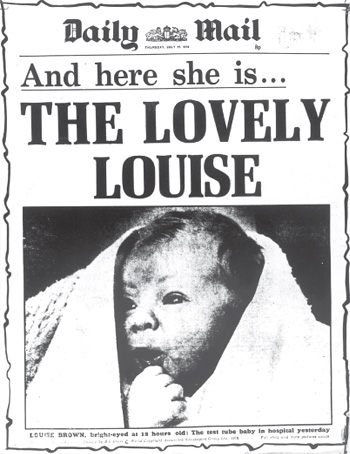 |
IVF – a safe and effective treatment
IVF is now an established treatment when sperm and eggs cannot meet by natural means. Twenty to thirty percent of implanted eggs lead to the birth of a child. Complication risks are very small if only one egg is transferred into the uterus. Long-term follow-up studies have shown that IVF children are as healthy as other children.
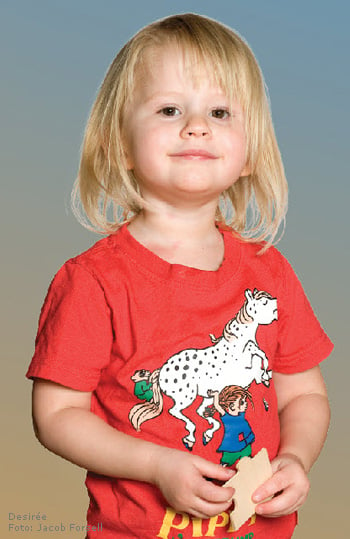
Four million children – so far
Approximately four million children have so far been born with the help of IVF technology. Several IVF children have given birth to their own healthy children, and this is perhaps the best evidence for the safety and success of IVF therapy. Robert Edwards’ vision is now a reality, and brings joy to families all over the world
Credits and references for the 2010 Nobel Poster for Physiology or Medicine
Scientific Advisors, Professors at Karolinska Institutet: Göran K Hansson, Medicine, Secretary of the Nobel Assembly; Outi Hovatta, Obstetrics and Gynecology; Christer Höög, Genetics; Klas Kärre, Immunology, Chairman of the Nobel Committee; Hugo Lagercrantz, Pediatrics; Urban Lendahl, Genetics
Medical writer: Ola Danielsson
Illustrations and layout: Mattias Karlén
Copyright © 2010 The Nobel Committee for Physiology or Medicine
Web adapted version: Nobelprize.org
Nobel Prize® and the Nobel Prize® medal design mark are the registered trademarks of the Nobel Foundation.
Nobel Prizes and laureates
Six prizes were awarded for achievements that have conferred the greatest benefit to humankind. The 12 laureates' work and discoveries range from proteins' structures and machine learning to fighting for a world free of nuclear weapons.
See them all presented here.
